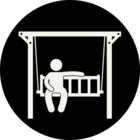Hi there,
I have x,y, and z point data. For approx 2500 holes (fixed x,y) I have multiple z representing the intersections of various strata (each z has a corresponding attribute representing the type of strata). I would like to build a 3D line with fixed x,y picking up all the vertex in z , then each line segment should use the corresponding type of strata as an attribute.
I've tried using the line builder - but can't quite tweak the parameters to give the desired outcome.
Thanks in advance












